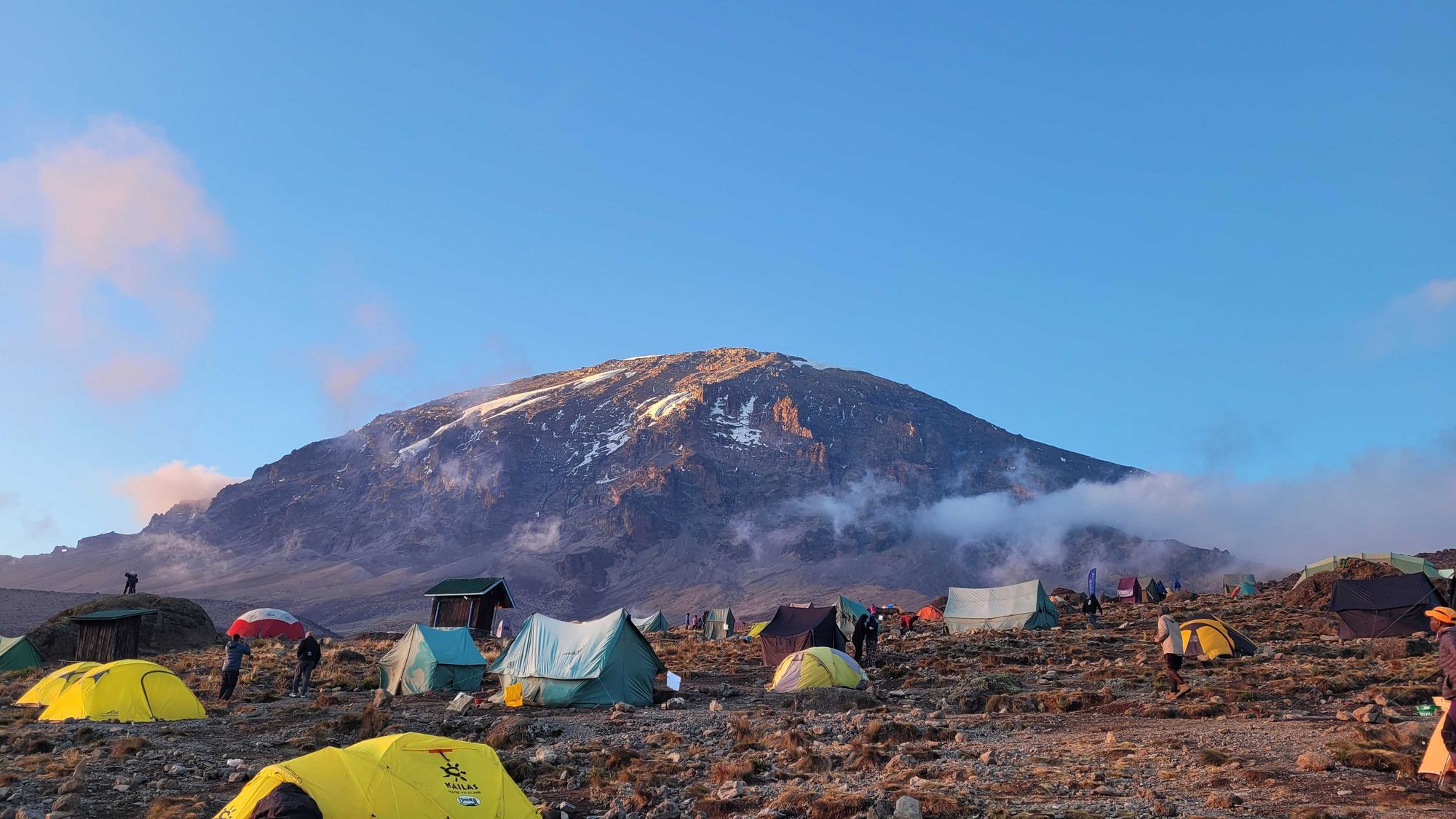I took a deep, contented breath as soft sunlight filtered through carpets of moss draped on the branches, making the forest feel ancient and primordial. Furry little tree hyraxes scampered in the canopy above, while at ground level purple blossoms and the red and yellow 'trunks' of the endemic 'elephant flowers' decorated the side of the trail.
Giant ferns reached for the sky, and boughs corkscrewed downwards – nature astounding me with the regularity of its fractal patterns amongst the wild disorder of the forest. This felt like what the earth should look like.
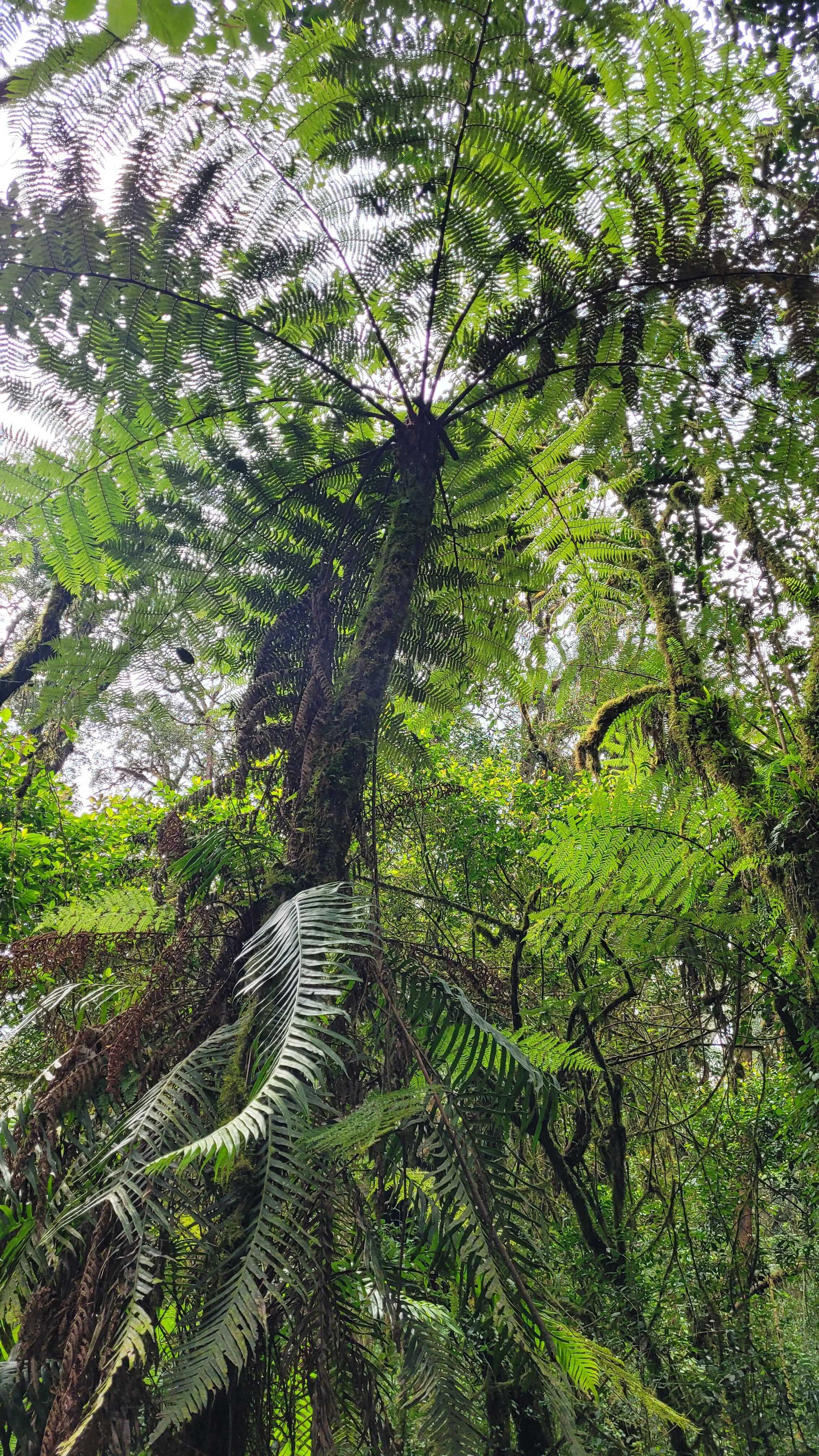
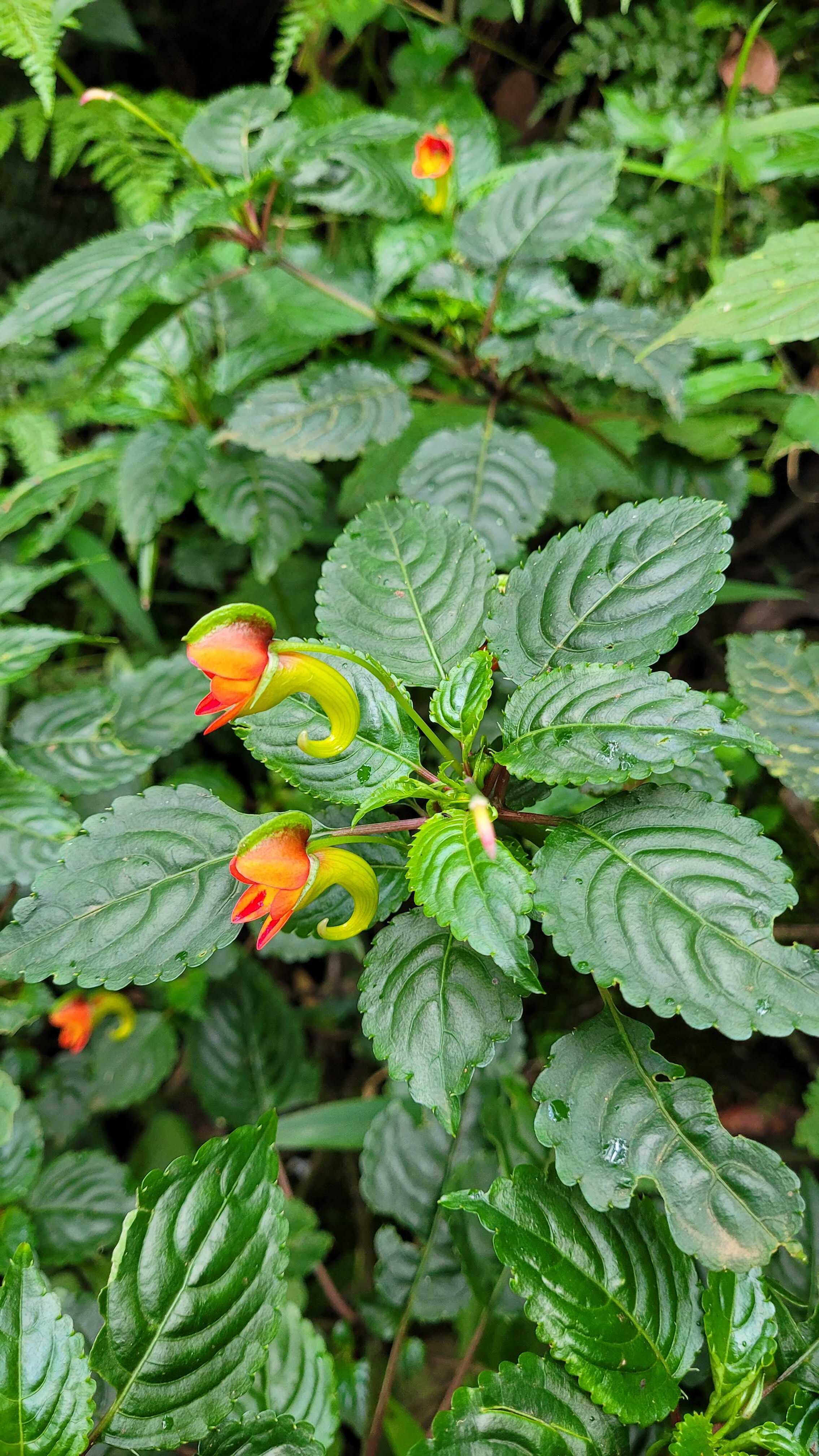
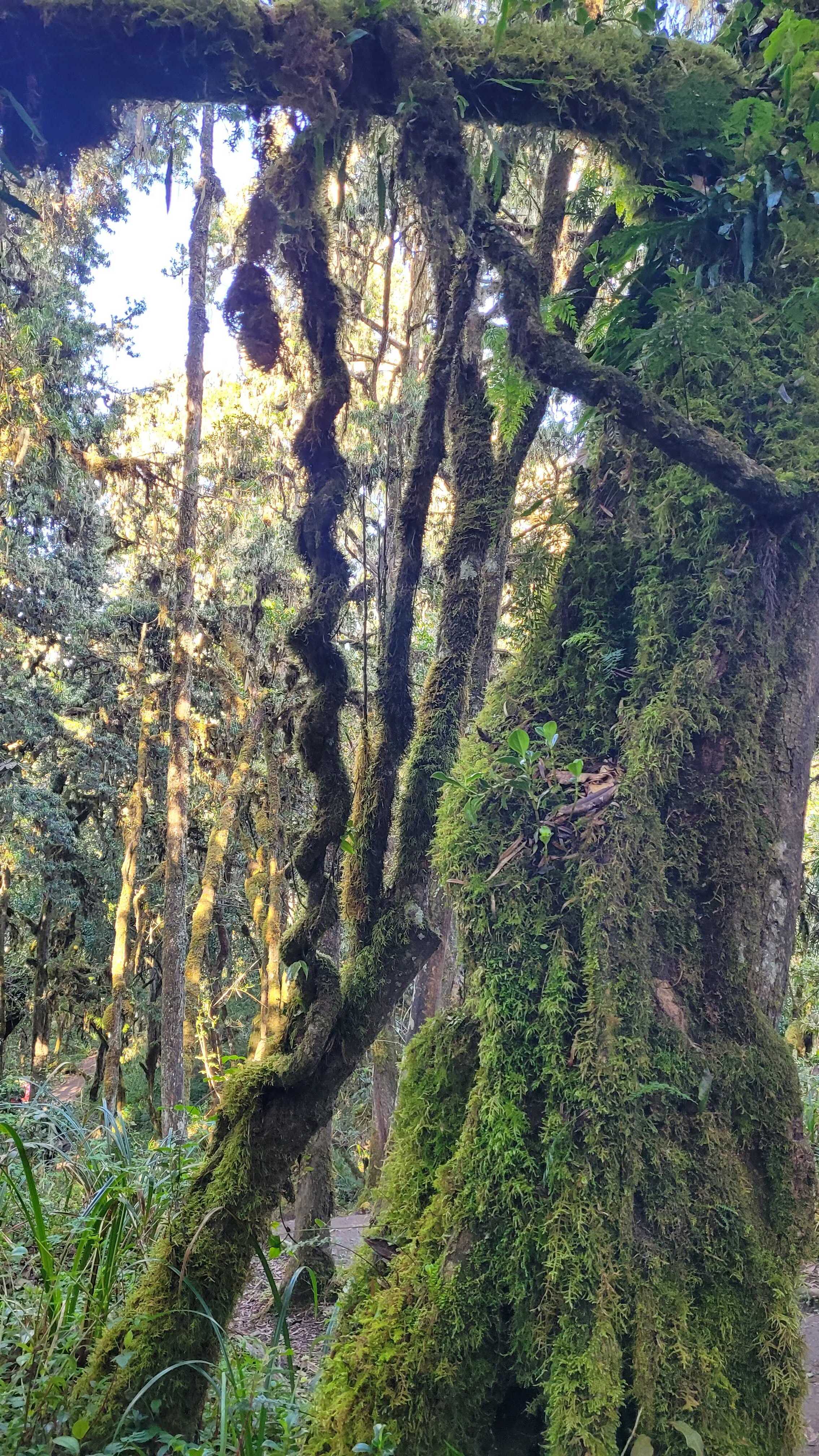
Just 24 hours earlier as I made my way to Tanzania, there was a not-insignificant part of me wondering why I'd felt the need to clamber up a huge mountain to mark my 40th birthday, instead of, say, having a party or lying on a beach somewhere sipping a cocktail. But finally hiking on the flanks of Mount Kilimanjaro, my mind quieted with the simple act of putting one foot in front of the other. From now on, that was all I had to focus on.

I'd had a ton of questions whirling around my brain as I contemplated the reality of climbing the highest mountain in Africa and the tallest freestanding peak in the world. How hard is it going to be? Will I get altitude sickness? Will I be able to sleep? Will it be cold? Will I get altitude sickness? Where will I go for a wee? Will the camping be uncomfortable? Will I get altitude sickness?
Neurotic, or reasonable? Perhaps a little of both.
I kept in mind Sheila MacDonald, who’d climbed Kilimanjaro on something of whim in 1927 (the first reported woman to do so)...
Of course, I’d done my research, I was prepared, and I knew that expert guides would be leading us the whole way up. So really, I knew the answers to these questions (“it depends,” in all cases). But having never hiked at such altitudes before, this was uncharted territory for me, so the excitement of the adventure was tinged with a little anxiety. However, I kept in mind Sheila MacDonald, who’d climbed Kilimanjaro on something of whim in 1927 (the first reported woman to do so) – if she could do it back then, I certainly was going to give it my best shot.
Happily, after meeting our head guide Andrew and my fellow travellers, my nerves abated. The detailed briefing Andrew gave us, where we could ask all of the questions we had, plus a thorough check of our kit against the list, meant we all knew we were ready for our adventure to begin the following day.
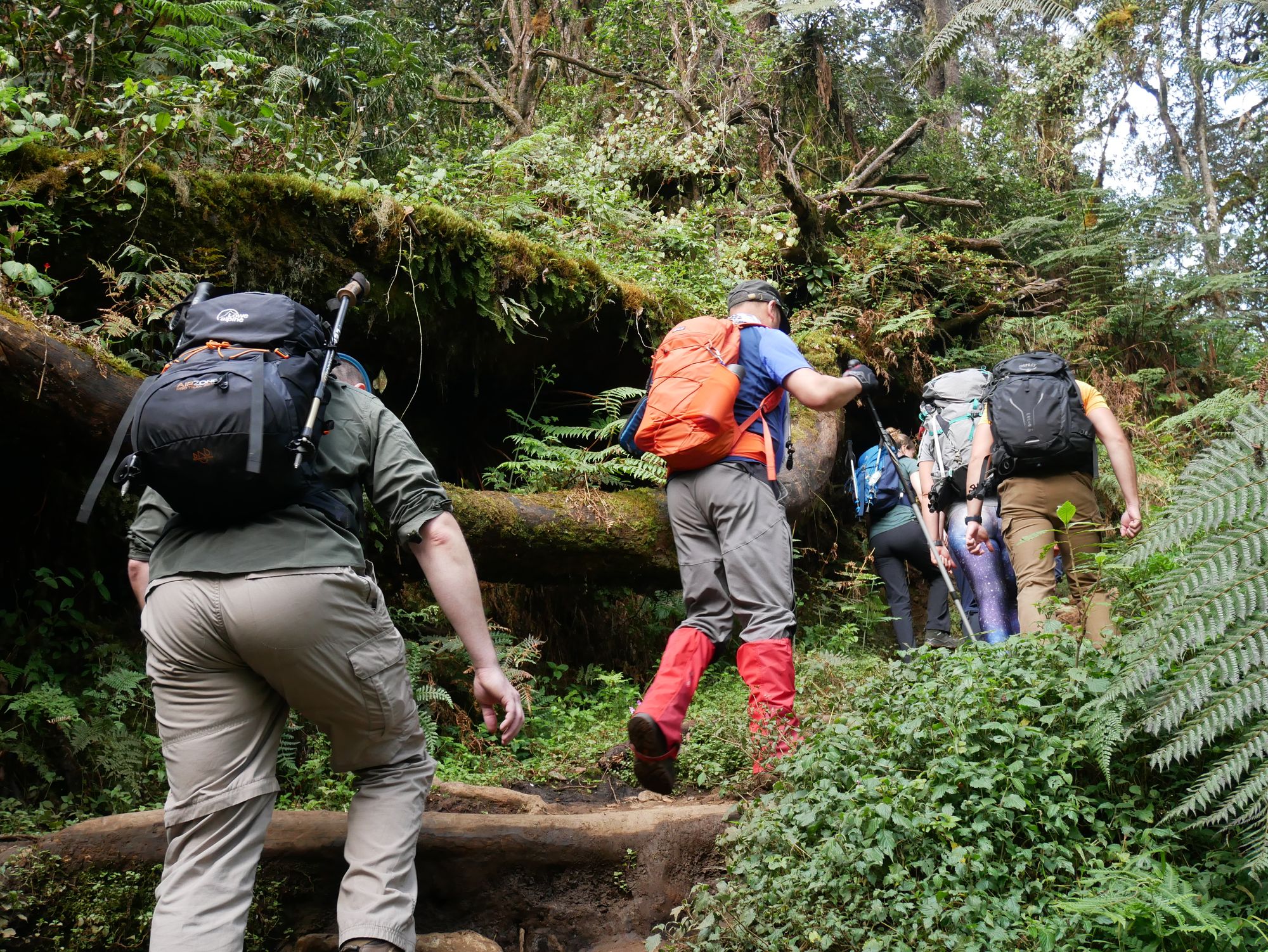
Summiting Kilimanjaro via the Machame Route takes seven days (including the hike back down). I’d chosen it partly because this route has a decent success rate (as it allows longer for the body to acclimatise to the altitude than the shorter Marangu or ‘Coca Cola’ Route), but also because this trail passes through such a variety of terrain and different climatic zones.
I do like my hikes to be scenic, and boy, did it deliver.
The trail up the mountain
The Machame Route is one of the more popular routes up Kilimanjaro, because of that aforementioned higher success rate. This route profile works well with the walk-high, sleep-low principles of acclimatisation. Along with the number of people completing the hike, there are also a huge amount of porters accompanying each group, yet thanks to the expertise of our guides who determined our pace and when we set off each day, the trail never felt overcrowded or busy.
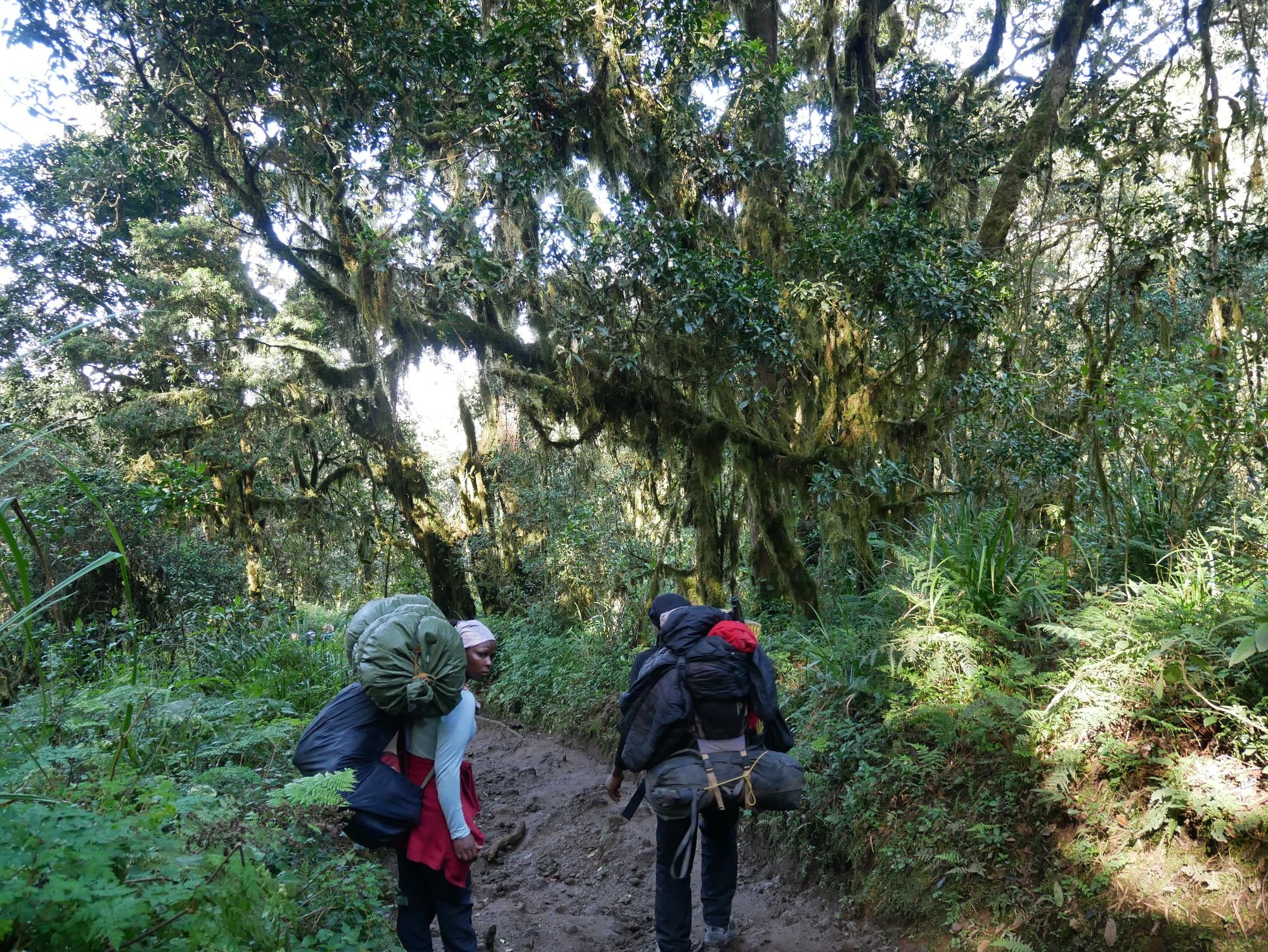
In fact, saying hello to our cheery crew as they passed by with dismantled pieces of our camp (which had magically been put back together again when we arrived at the next campsite) added to the camaraderie on the trail. Whilst we occasionally overtook other climbers, a lot of the time it felt like our group and porters had the trails to ourselves. It was only when arriving at each campsite that we had a grasp of how many people had followed the trail that day.
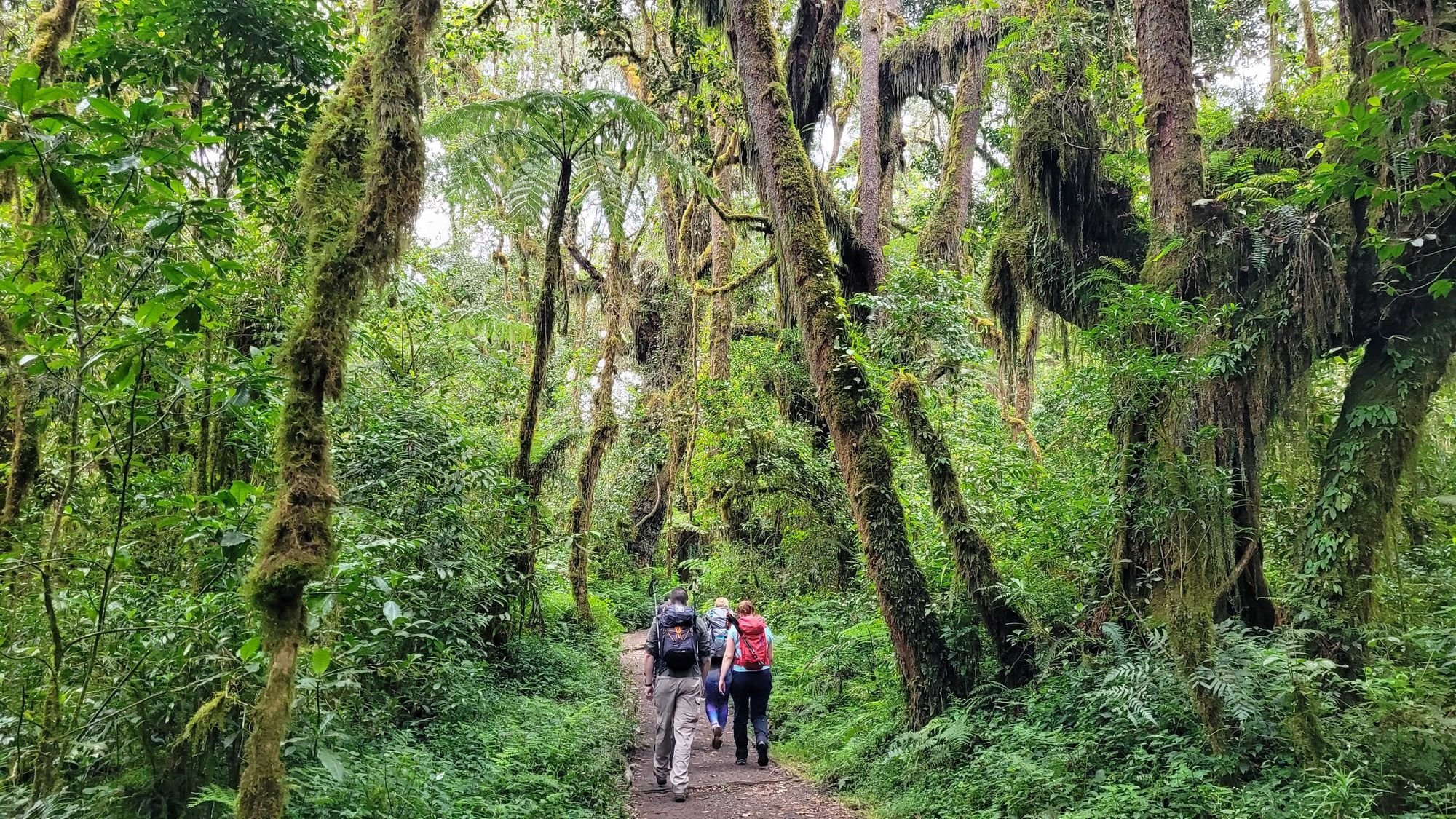
As the hike began, we followed the trail through Kilimanjaro’s verdant foothills. I was taken aback as we trekked among ancient-looking trees dripping with lichens and mosses and were dwarfed by ferns. With so many Kilimanjaro photos being of the barren, dusty summit, I somehow hadn't expected such fecundity.
Warm hues glinted through the trees as the sun got lower in the sky on our approach to camp. We left montane forest and entered the alpine moorland zone.
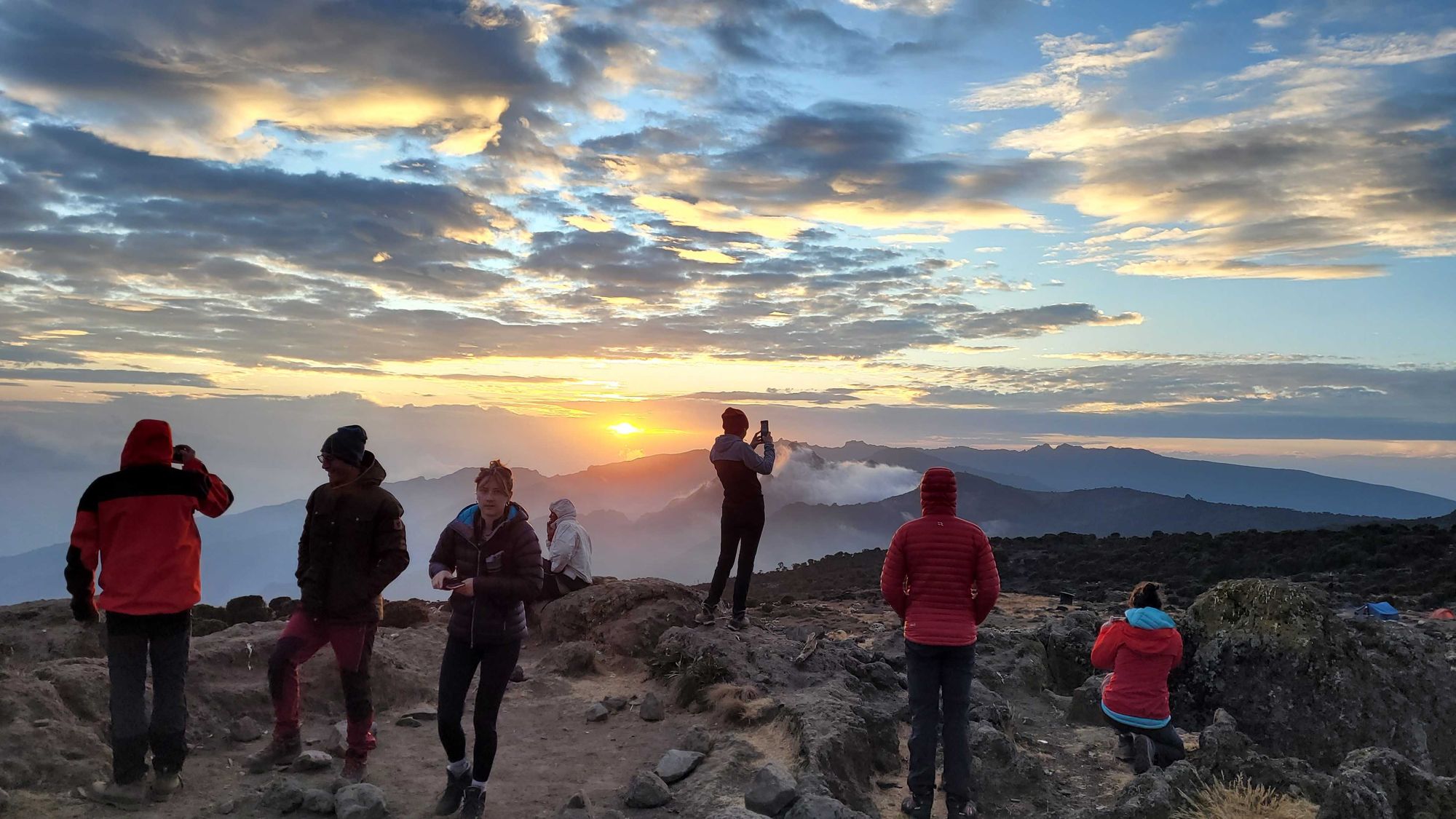
From the second day of hiking, the tree line was below us. Dust was king here and we were often able to look down on the clouds. Still, Kilimanjaro’s peak towered above, seeming impossibly far off. Pretty alpine flowers lined the path; stark lava formations rose from the earth; the thin air was increasingly difficult to breathe and made us thankful for the slow pace.
Carpets of draping moss made the forest feel ancient and primordial. This felt like what the earth should look like.
Each day, views were frequently hidden by thick cloud rolling in, but it usually drifted away again just as quickly. Giant senecio trees lined streams, revealing their age with the number of branches they had (each one takes 10-15 years to grow). The trail undulated high then dipped back down into valleys.
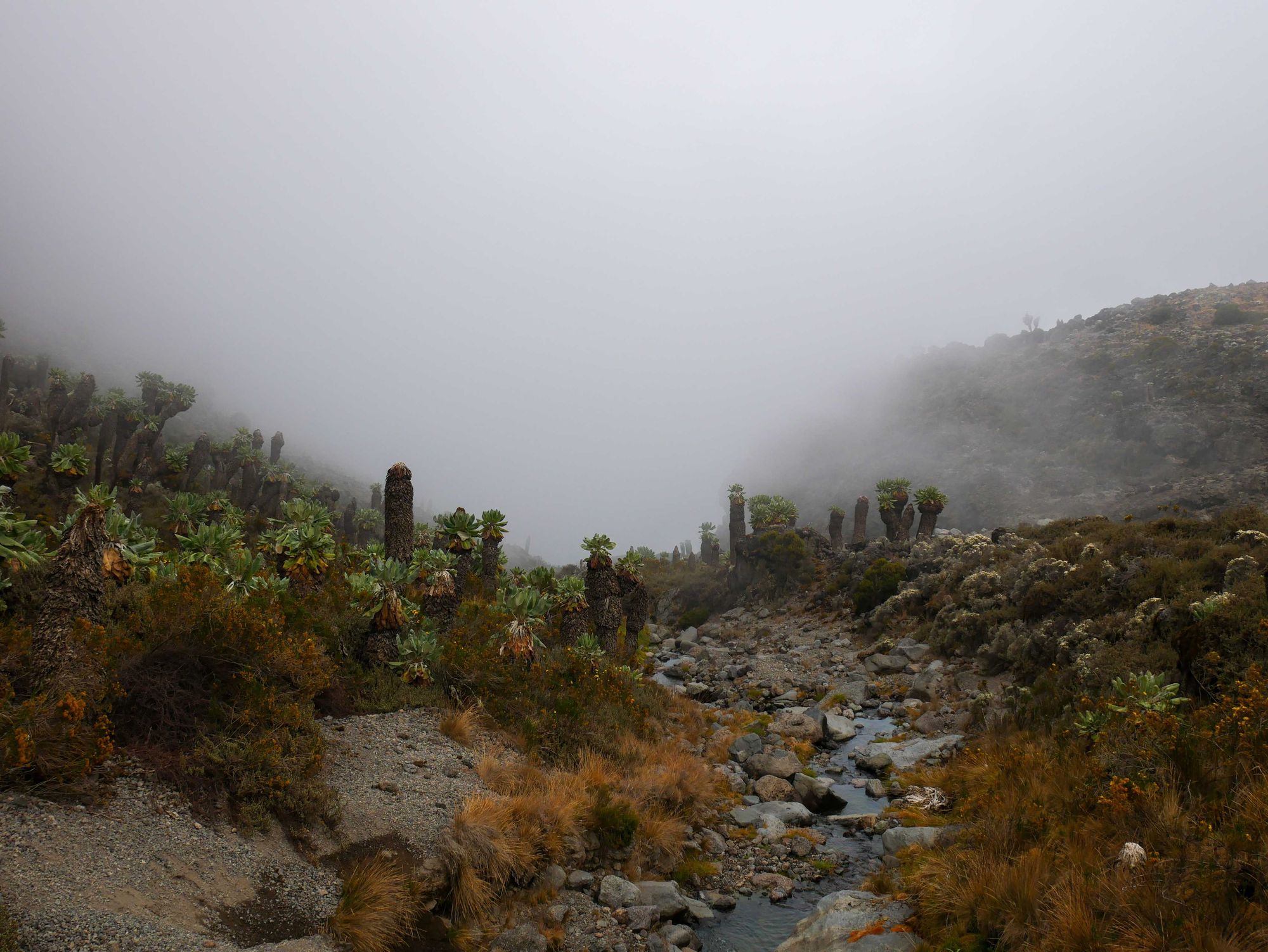
One of the most memorable parts of the trail was the scramble up the Barranco Wall. Tucking our hiking poles away, we tackled the interesting climb, carefully placing our hands and feet as we made our way along the narrow path that snaked up the 250m+ (820ft) rock face. Climbing in thick cloud all the way, we couldn’t really see how high we were (which was perhaps a blessing!).
The day we reached Barufu Camp (base camp for the summit day on the Machame Route) we hiked only around 2.5 miles (4km). But although this sounds short, our pace was super slow to allow us to acclimatise and have a greater chance of reaching the summit. From here, the trail wound through alpine desert: arid, rocky and grey, it had all the hallmarks of a volcano.
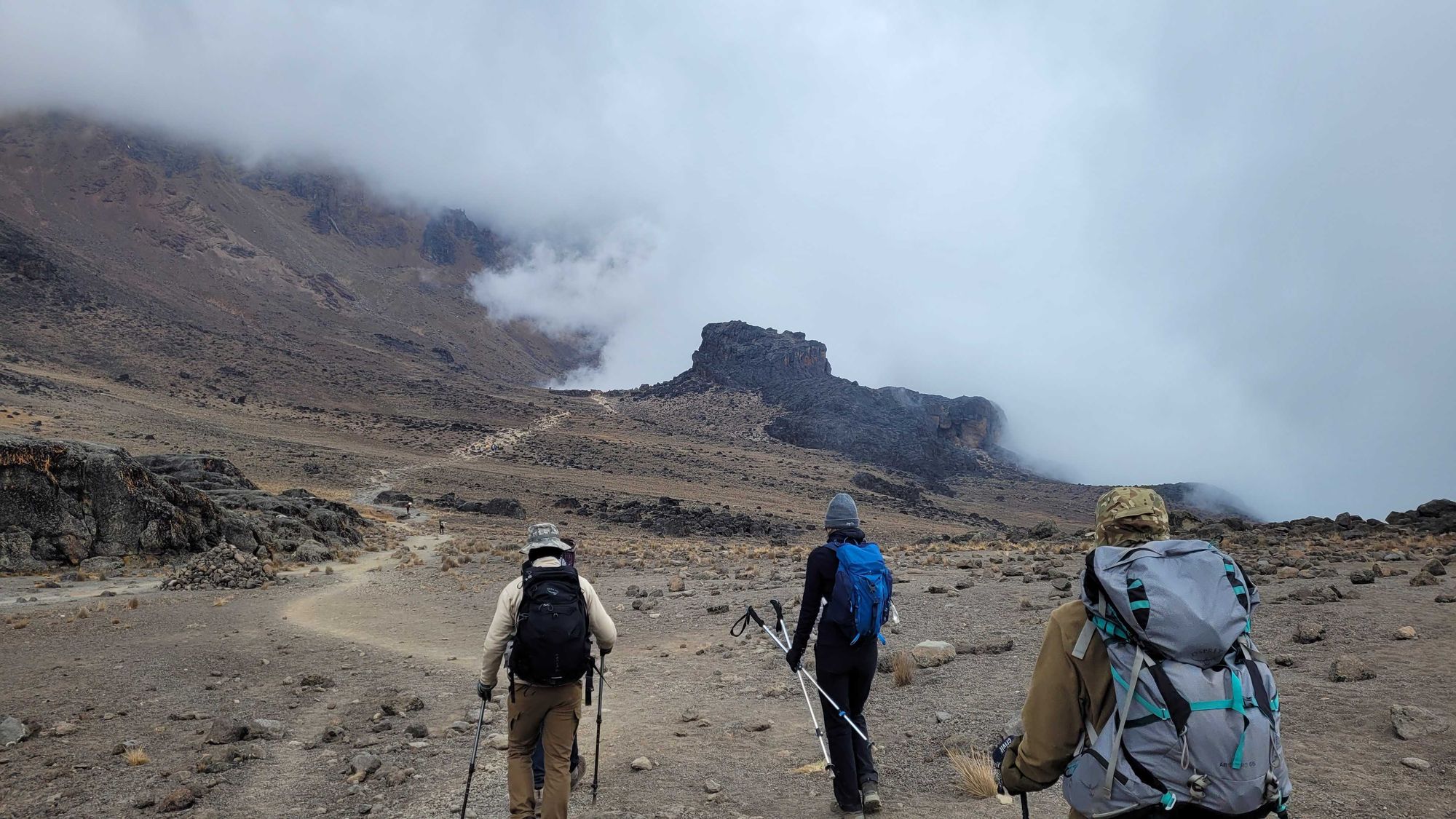
Camping on Kilimanjaro
Our group of climbers was half solo travellers, half people travelling in pairs. Our ages ranged from 20s to 50s and it was great getting to know each other. But it wasn’t just about us trekkers: the Tanzanian team accompanying us on the mountain made the adventure extra special.
The crew was made up of men and women from local villages as well as Maasai from the region, and they offered expertise, strength, comfort and good cheer. Not only did the team carry our overnight kit, all the camping gear, fresh water, plenty of food, and our own private toilets, but it was done with joy. We were always met at each camp with smiles, encouragement and congratulations.

Our guide Andrew joked about our ‘four-star hotel on the mountain’ but in all seriousness, it was so much more comfortable than I’d anticipated.
We were provided with hot water to wash with morning and evening; we had our own toilet tents; our sleeping tents were perfectly roomy enough for two, and we had a group mess tent where we spent time relaxing and ate our meals. Oh, and did I mention the views?! Camp was the place where we could truly take in the majesty of our surroundings – glimpsing the mighty peak through shrouds of cloud; witnessing unforgettable sunsets, and basking in a twinkling sky filled with more stars that I’ve ever seen in my life.
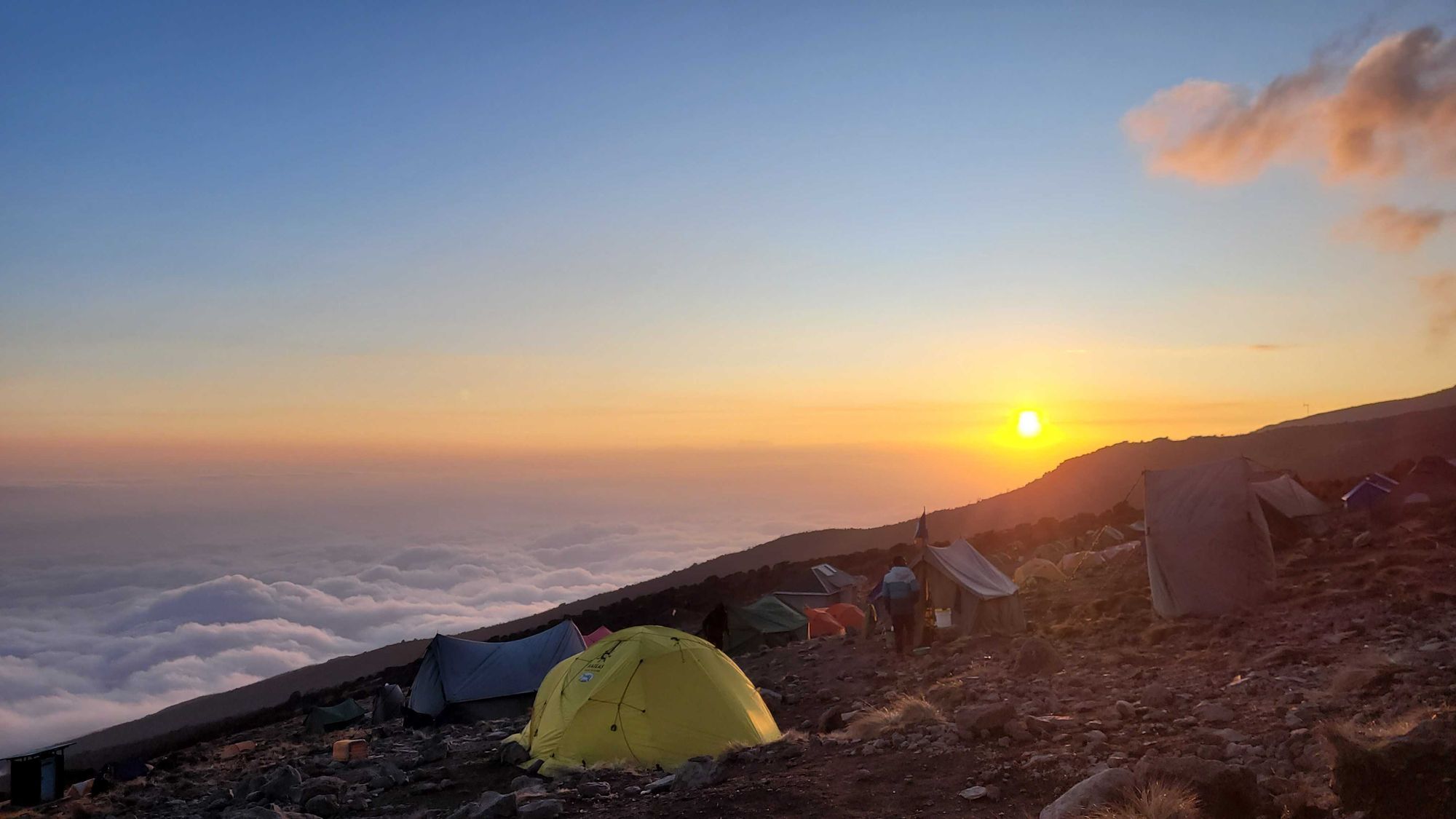
As for the food... oh my, the food. Our chef and our waiter (yes, we had our very own waiter) both worked tirelessly to ensure that we ate the largest meals of our lives, three times a day, with multiple courses. Fortunately these were also delicious, fresh and varied; plantain stew with chapatis was a personal favourite.
Each day began with porridge, eggs, sausages and hot drinks; each lunch time and dinner time we were offered delicious soups, pasta, potatoes, meat and vegetable sauces, all rounded off with fresh fruit.
To the summit of Africa
We began our trek to the summit in the dead of night, under the light of many, many stars, with the Milky Way clearly visible. Slowly, slowly (or ‘pole pole’ in Swahili) we trudged in the dark, the air cold and still around us. Up, up, up we shuffled along a path of scree and switchbacks, heads down to follow the light of our torches.
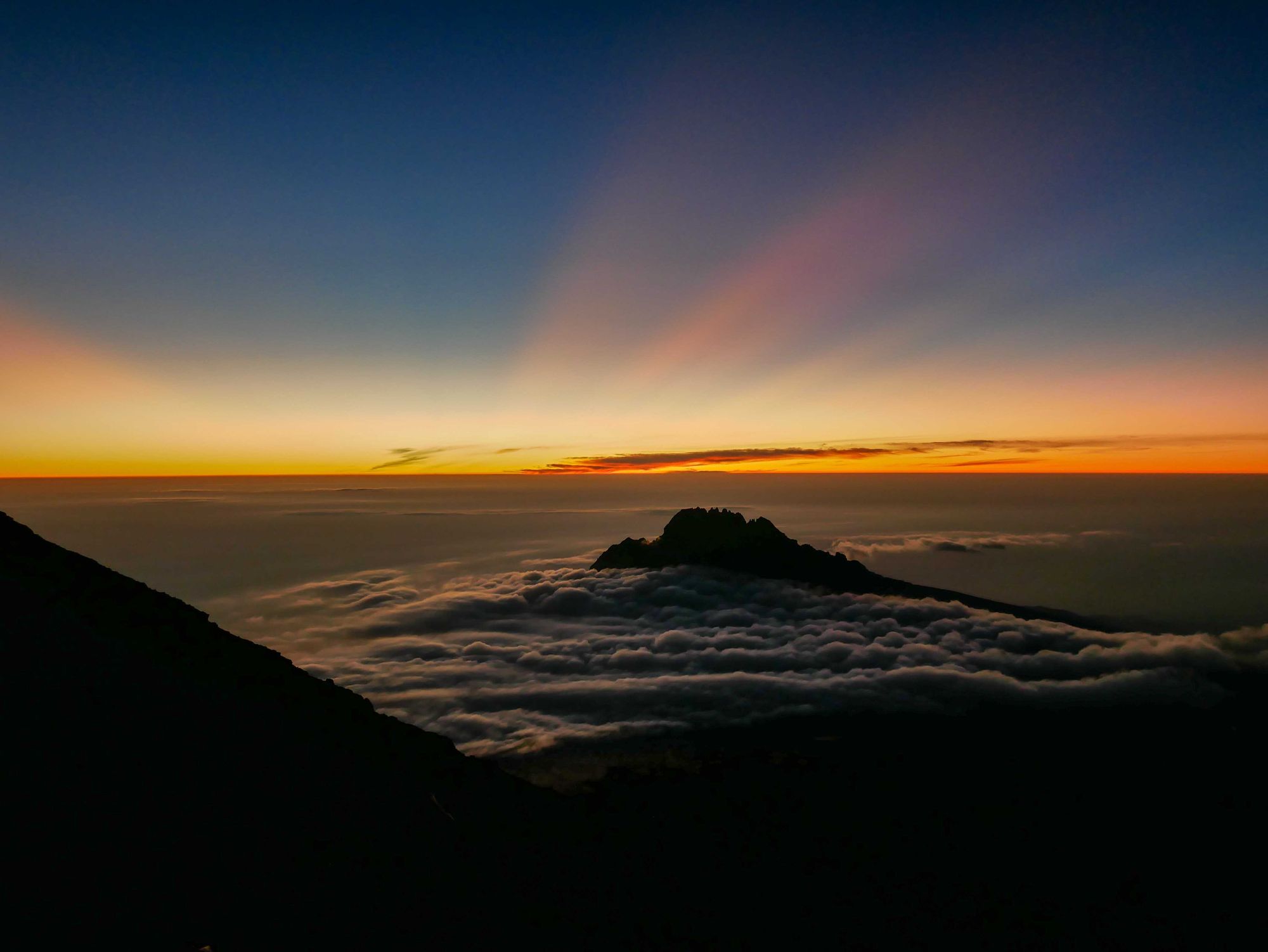
Our guides and summit porters sang intermittently to keep us motivated as we followed the feet of the person in front of us. Sunrise was a treat and a mood-booster – gradually the stars faded and light began to fill the inky sky with glorious sunrise colours, before the sun burst through and warmed us a little. Switchback after switchback we continued on the barren, dusty ground, surrounded by astonishing views.
First reaching Stella Point on the crater rim, then continuing to Uhuru Peak, clear blue skies made the perfect backdrop. Kilimanjaro’s retreating glaciers came into view, and finally – we were there. There were a fair few people at the summit of course, but not an overwhelming amount. There was plenty of space to enjoy the moment. We spent some time taking in our surroundings – and our achievement – with our team, before tackling the descent.
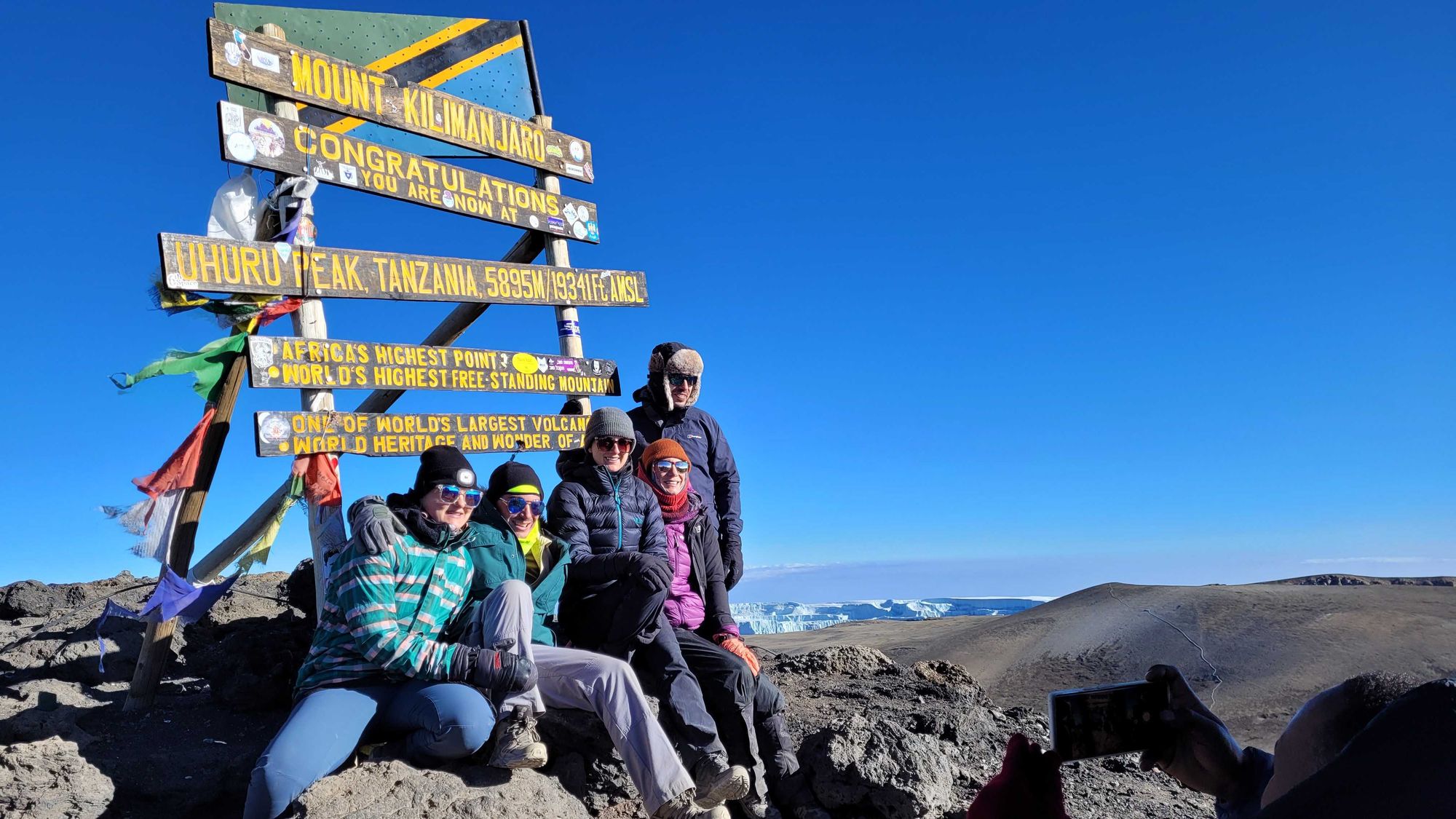
As for the descent, it was pretty brutal. Unless you love a faceful of volcanic dust, plus a path that you can barely look up from as it varies from loose rocks to slippery mud to gnarled roots, all after hours of hiking up the tallest mountain on the entire African continent, then it’s going to be tough. But it had its positives too: as we descended to lower elevations, that sweet oxygen filled the air and kept us strong until we reached Mweka Camp at 3100m, where we crashed out.

After a very deep sleep, our final day of hiking took us back through that magical and ancient forest, with clouds atmospherically drifting in and out as we powered on towards the promise of showers, clean clothes and soft beds.
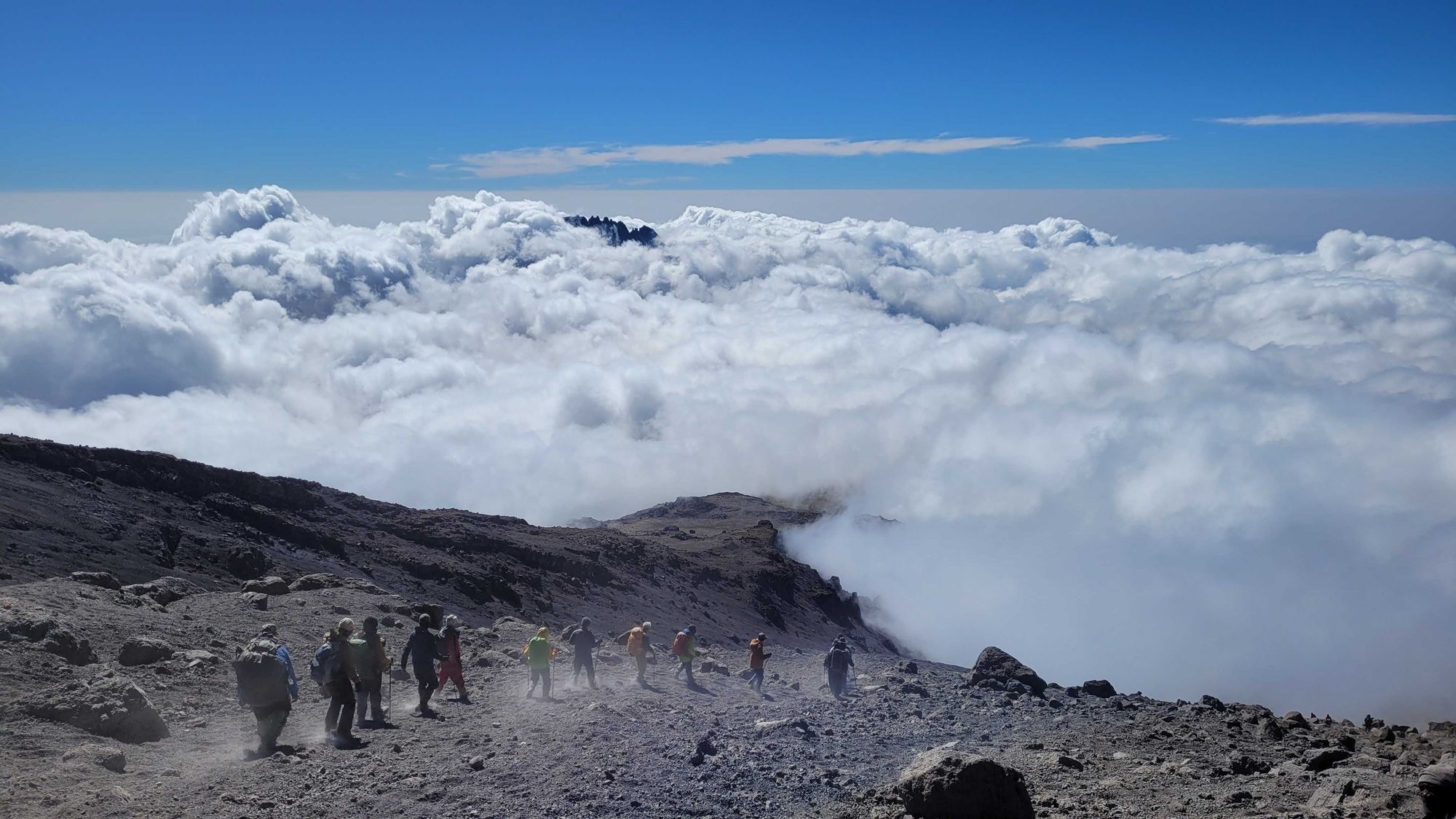
The aftermath
There's a lot to explore beyond Kilimanjaro, and I decided not to wrap up my adventure there and head straight home. Rather, I wanted to take a few days to process the experience of the trek, and to relax before the long flight home.
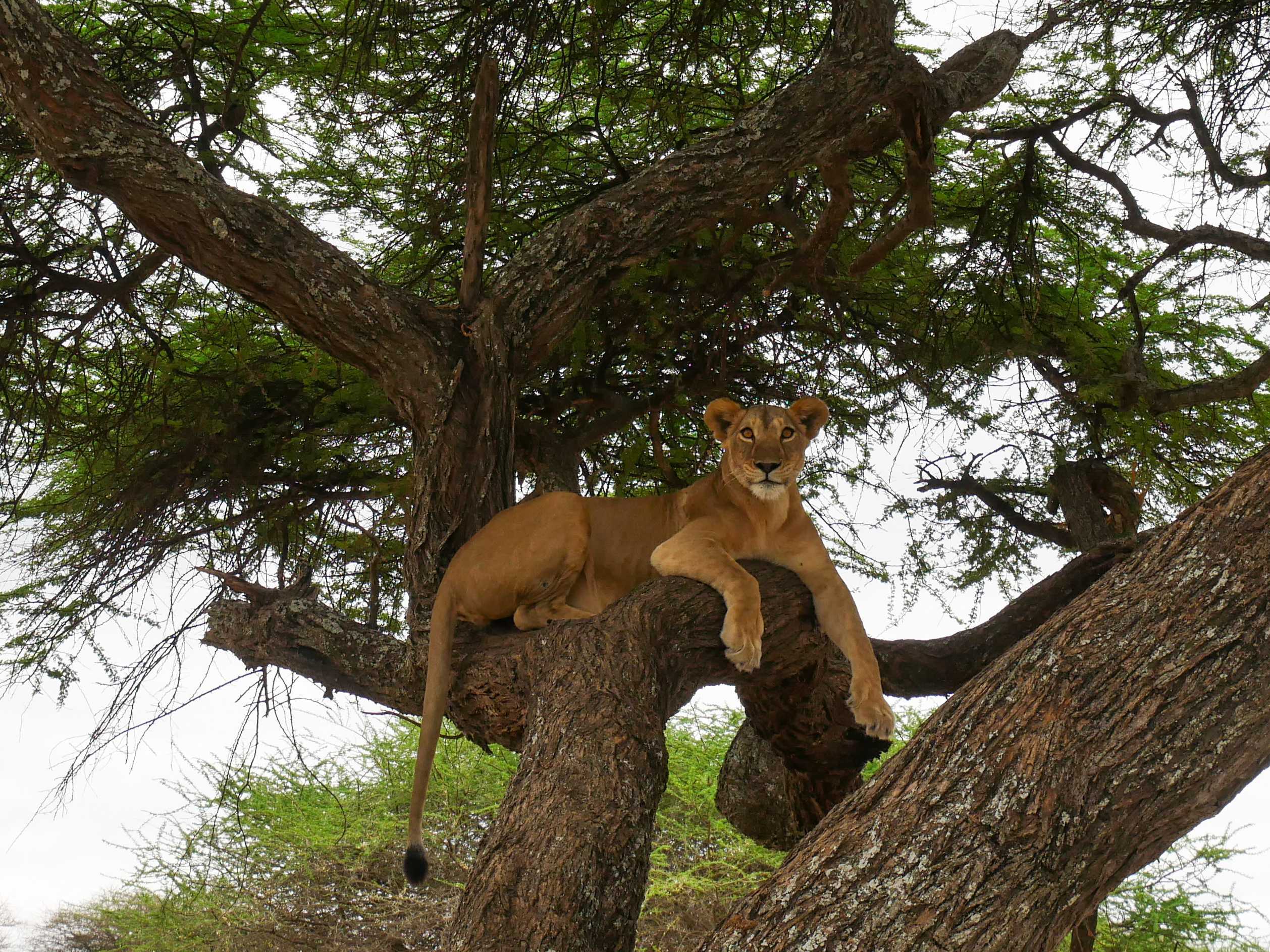
Heading into some of Tanzania’s iconic National Parks (Ngorongoro, Lake Manyara and Tarangire) on safari for three days was the perfect tonic – and the nights spent at a lush, countryside lodge with huge, soft beds were a real treat. Seeing lions, elephants, buffalos, hippos, and even a leopard in the wild following Kilimanjaro's summit was the icing on the cake of an unforgettable, life-affirming adventure.
Inspired? Browse all our Kilimanjaro treks, including climbing via the Machame Route and going on safari.


